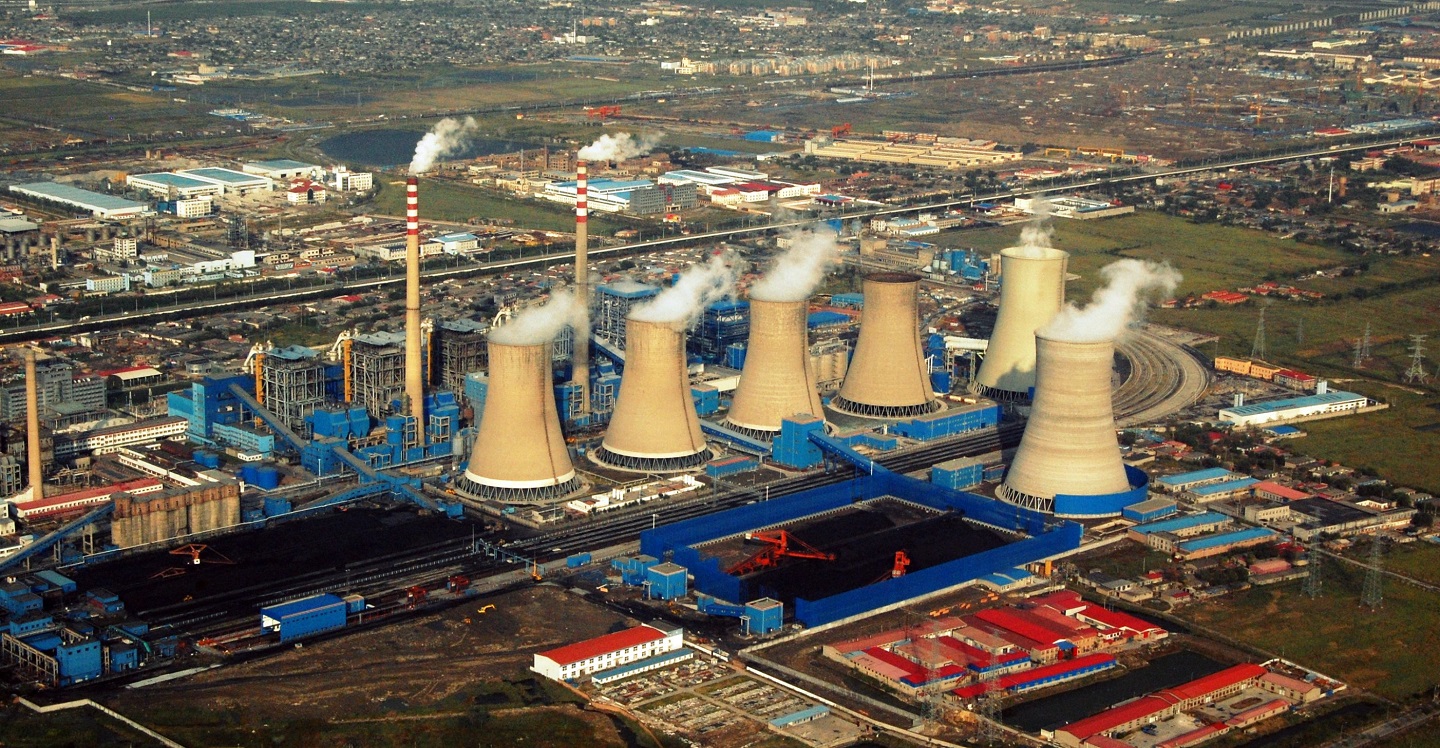
Should the United States take preventive military action to mitigate the effects of climate change?
Should polluting industrial sites in China and elsewhere be attacked militarily to slow climate change? It is a hyperbolic question, but it bears some consideration. How far should the United States go to protect its national security interests from the effects of climate change, especially when the threats are transnational? Should the United States take preventive military action to mitigate the effects of climate change?
Developing countries such as China often rely on “dirtier” technologies and industries to boost development and grow their economies; however, their emissions are not confined to national or even continental boundaries. Because of such far-reaching effects, those emissions affect others’ national security. The United States is definitely not at the point of taking military action to compel other nations to mitigate their carbon emissions, but unless civilian policymakers start taking action with the other instruments of national power, this could become a military problem eventually, as so many do when they are ignored for too long. In fact, that approach has already been suggested by at least one pundit, even if sarcastically. But for now, it remains a largely environmental one.
Changes to the climate will affect almost every aspect of life on Earth. From everyday concerns of where we live and what we eat, to national security issues such as military basing and losing a physical barrier against attack from the North Pole. According to a National Aeronautics and Space Administration (NASA) report, “sea levels are rising at a rate of more than 3 millimeters (mm) a year.” But what does that mean in practice? It’s just a one-inch rise over eight years. Is that so bad? In a word, yes. The issue is not that first inch, but where it leads if left unchecked. Roughly 40% of the United States population lives in coastal areas. Coastal flooding has increased by multiples of three to nine times in frequency. The direct impact of this is the loss of deep sea ports, which was the focus of a recent article in the Wall Street Journal. Sea level rise, flooding events, and the increasing intensity of tropical storms have a cumulative effect on our coastal areas. According to a report published by the Union of Concerned Scientists, that combined effect will lead to nine Navy installations on the East and Gulf coasts experiencing near-constant flooding within the next 50 years. The Navy paints a much darker picture. Based on NASA’s report, it estimates the loss of as many as 128 of its bases to sea level rise within the century.
A second implication of sea level rise is a high likelihood of increased social conflict, as affluent areas are able to adapt more quickly than poorer areas. Migration patterns that shift people away from flooded and drought-stricken areas, could spark a competition for remaining land and resources. The world already sees mass migrations in the northbound “caravans” of people escaping poverty, failed governments, and violence in Central and South America. These may be a preview of what is to come when climate changes drive people to move for other reasons. If largescale migrations of Americans leaving drought- or flood-affected rural communities occur simultaneously, social safety nets could be stretched to their breaking points.
Another source of social conflict and disorder is food insecurity. According to a CSIS report, increasing costs and decreasing availability of food have led to violent demonstrations and large-scale unrest in at least 40 countries. This is caused in part by increasing ocean temperatures and acidity, and decreasing oxygen content which affects fisheries that provide roughly 17% of global protein in the form of seafood.
The seas and coastal areas are not alone in facing the effects of changing conditions. Increasing temperatures are leading to drought conditions exacerbated by snowpack reductions and earlier snow melt, as well as reduction in surface soil moisture (which the studies differentiate from the lack of rainfall). This increased dryness has also led to an increase in the frequency of wildfires. Drought conditions combined with additional temperature and weather changes are also affecting crops. The Environmental Protection Agency highlights incidents of corn crop disruption increasing across the Midwest. Punctuate that with an example of a single year’s cherry crop disruption in Michigan that had a $220 million impact all by itself. These disruptions and losses will be compounded year after year in place after place.
These and other changes affect national security. For example, studies show that in the next 20 years the arctic could be nearly ice-free during the summer. Controlling Arctic access is important for U.S. security, and the Department of Defense recently published an updated Arctic Strategy to address it. In the past, the United States has been able to count on competitors having a frozen, physical barrier to check their approach from our north. However, combined with Russian territorial claims around the North Pole, a summer ice melt will deteriorate Arctic security and threaten northern approaches to the United States.
A more direct national security consideration of the changing physical environment is its effect on military basing. While the mind goes to coastal basing first, especially with the reported increases in flooding and the projected rise in sea level, the interior is just as vulnerable to challenges. Flooding at Offutt Air Force Base near Omaha, Nebraska in 2019 is a case in point. Offutt flooded when a levee broke at the confluence of the Missouri and Platte Rivers. The damage included 137 lost structures. Recovery is estimated to cost approximately $1 billion and to take more than five years to complete. The levee breach itself was caused by the intersection of several climate-related factors: A later ground thaw reduced the ability of the soil to absorb moisture, and an earlier than usual snowmelt, plus heavier than usual rains, increased the amount of water the soil needed to absorb. An unprecedented volume of water flowed into these rivers and overwhelmed their levee system.
According to a Reuter’s report, China’s total carbon emissions in a decade were 12.3 billion tons – a greater than 50% increase over previous periods.
If there is blame for such changes that can be affixed here, it is worth taking a look at China. According to a Reuter’s report, China’s total carbon emissions in a decade were 12.3 billion tons – a greater than 50% increase over previous periods. The same report warned that without a change in China’s CO2 emissions, its annual emissions would rise an additional 30% over the next 10 years. Research published by the Belfer Center for Science and International Affairs highlights the importance of benchmarks when making comparisons, stating:
“While U.S. CO2 emissions are in aggregate less than China’s and the differential is growing, U.S. per-capita emissions are almost double (17 tons of carbon per-capita, compared to 6.26 tons in China in 2012). This gap will shrink as China’s economic growth levels remain higher than the United States. As the gap shrinks, so will the emissions-per-capita ratio. However, for China to meet the U.S. per capita GDP level, it would require an unsustainable level of fossil fuel consumption—both economically and environmentally. While this gap will narrow, it will not close.”
That same report points out differences in the ways the two countries generate and use their energy and their sources of emissions. These differences are based on China’s having a largely coal-burning energy production system. China lacks the oil and natural gas reserves the United States enjoys, and therefore predominantly imports its oil. The report also points out that responses by the two governments to the climate change problem will be as different as their forms of government are. Interestingly, Beijing blamed its inability to meet recent emissions goals on its ongoing trade war with the United States.
So how should the United States respond to a clear global threat, a good portion of which emanates from China? Should the United States explore military options to neutralize or destroy transnational environmental threats? Not yet. But climate change is real, and it poses a grave threat to US National Security. The biggest challenge to meaningful action at this point may be speed. Consider the scene in the movie Austin Powers: The Spy Who Shagged Me, where a security guard is standing in front of a slow-moving steam roller and eventually is flattened simply because he fails to step aside. The challenges of climate change will require more drastic, and likely more expensive, responses the longer the United States waits to enact meaningful mitigation strategies. Suggesting military action to respond to a problem is a guaranteed way to attract attention to the subject.
If a military response seems overblown and disproportionate, the United States must seriously explore alternatives across the spectrum of national power. What role might diplomatic, economic, or informational instruments offer to solve the global problem set?
From a diplomatic standpoint, there is value in leading from the front. The world came together, remarkably, to negotiate the terms of the Paris Climate Accords. But the agreement was unacceptable to many political leaders despite broad support from the public, so American participation in the Accords became a point of political dispute, and when Donald J. Trump took office in January 2017, he announced his intentions to withdraw. The United States still has a leading role in nearly every international body, and a great deal of influence to leverage once some consensus is achieved. President Biden signed an executive order in January 2021 that led to the United States reentering the global pact in February 2021.
Economic solutions may also be available to address the challenge of climate change. The market may not address the climate problem by developing green technologies without some government intervention. The Soviet Union’s 1957 launch of its Sputnik satellite into orbit was insufficient on its own to generate a market-based approach to the space race. The U.S. government had to invest in space instead, and now we have SpaceX, Virgin Galactic, and others. In much the same way, it will likely have to start investing more in so-called “green energy” solutions, such as biomass refinement as defined in a recent CRS Report, to push things to a point where the market picks up the ball.
Though global climate change advances, there is still time for civilian policymakers to begin diplomatic and economic approaches to address gross polluters before they become a military problem. Developing a set of national goals, acting toward those ends, and leveraging diplomatic relationships to bring others on board with them is a good place to start. The physical and economic impacts of climate change demand action now. If current projections hold true, large swaths of the continental United States will be flooded or become a dust bowl in the future. Areas with less of a temperate climate will be affected sooner than the United States, if not more severely. There are also the effects of migration due to climate disruptions such as flooding, drought, and dust bowl conditions. Local as well as transnational migration patterns will have significant effects on resource allocation and availability, creating a plethora of potential consequences. We don’t need to go to war with China or anyone else over climate change just yet, but a sense of urgency is needed to address these issues before they become a defense problem.
Pete Helzer is a Lieutenant Colonel in the Oregon Army National Guard and a graduate of the AY20 Resident Class of the U.S. War College. The views expressed in this article are those of the author and do not necessarily reflect those of the U.S. Army War College, the U.S. Army, or the Department of Defense.
Photo Description: Despite resembling nuclear plant cooling towers, these are the chimneys of the Junliangcheng Coal Power Plant, Tianjin, China.
Photo Credit: Shubert Ciencia via Wikimedia Commons




